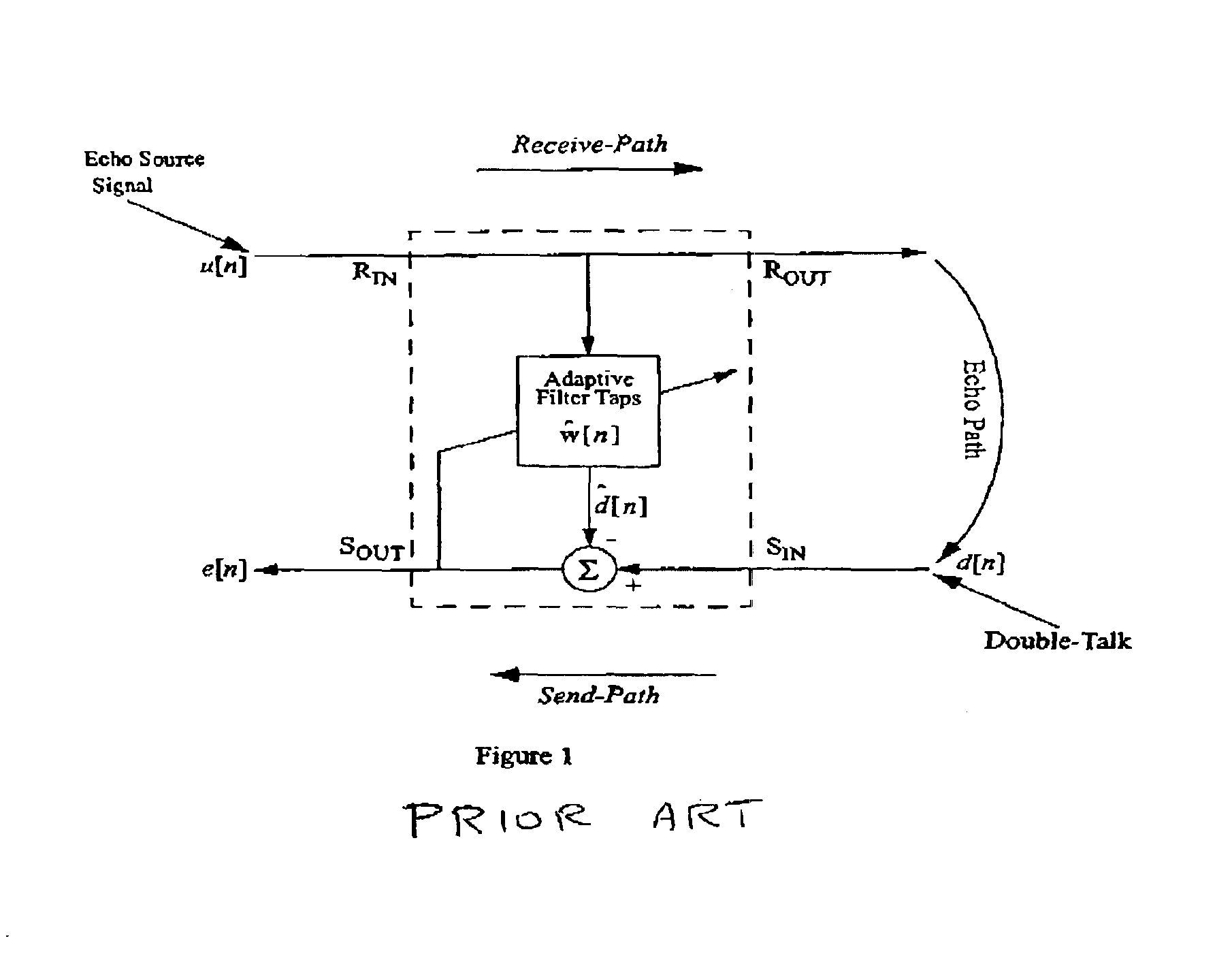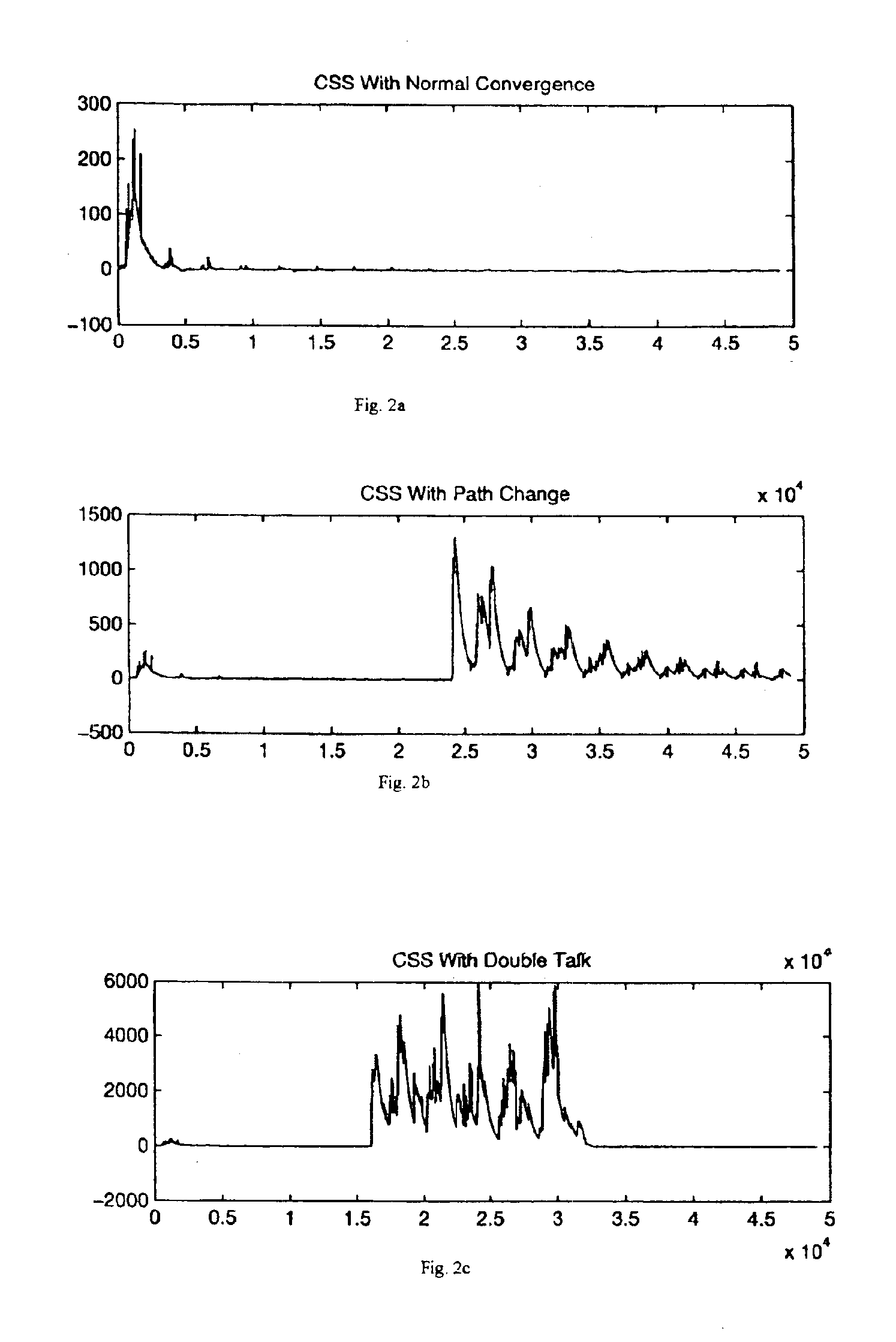Double-talk and path change detection using a matrix of correlation coefficients
a correlation coefficient and correlation coefficient technology, applied in the field of detection of doubletalk and path changes in echo cancellation systems, can solve the problems of affecting the performance and affecting the accuracy of the pre-converged echo canceller
- Summary
- Abstract
- Description
- Claims
- Application Information
AI Technical Summary
Benefits of technology
Problems solved by technology
Method used
Image
Examples
case 1
[0048] Unconverged, No Double-talk
[0049]If the LMS filter is in an unconverged state, H0,0≠H1,0. This situation occurs when the echo canceller is first started, or following a major echo path change. Since the LMS filter does not contain an accurate echo path estimate, X0≠X1, and R will be full rank (unless H1,0=0, but this condition is usually temporary) with a very low condition number. See, for example, G. H. Golub and C. F. Van Loan, Matrix Computations, 3rd ed., Johns Hopkins University Press, Baltimore, Md. (1996). (κ˜101). As convergence proceeds, the degree of correlation between X0 and X1 and increases. This has the effect of rapidly raising the condition number of R. As a result, the determinant of R will fall, and its eigenvalues and singular values will become increasingly disparate.
case 2
[0050] Converged, No Double-talk
[0051]In this state H0,0≈H1,0., so X0≈X1. This will make R very nearly rank deficient, and its condition number very large (κ˜106). Since R is close to being singular, its determinant will become very small. Similarly, we would expect to find only one significant eigenvalue or singular value.
case 3
[0052] Double-talk
[0053]When double-talk is occurring, X0 contains components from both S0 and S1, while X1 is derived solely from S0. In this case, X1 and X0 and are highly uncorrelated. R will have a low condition number, and this will be sustained for the duration of the double-talk. The higher the double-talk level, the lower the condition number becomes. This will raise the determinant of R, and we will find two significant eigenvalues and singular values.
[0054]Once the matrix R is generated, a variety of operations are available to determine what state the echo canceller is in. The condition number, determinant, eigenvalues and singular values of can all be used to test for double-talk or path changes. The determinant is used in the preferred embodiment because it is the simplest matrix operation to perform.
[0055]To illustrate the effectiveness of this algorithm at detecting double-talk and path changes, simulations were carried out and the results are shown in FIG. 2. The plo...
PUM
 Login to View More
Login to View More Abstract
Description
Claims
Application Information
 Login to View More
Login to View More - R&D
- Intellectual Property
- Life Sciences
- Materials
- Tech Scout
- Unparalleled Data Quality
- Higher Quality Content
- 60% Fewer Hallucinations
Browse by: Latest US Patents, China's latest patents, Technical Efficacy Thesaurus, Application Domain, Technology Topic, Popular Technical Reports.
© 2025 PatSnap. All rights reserved.Legal|Privacy policy|Modern Slavery Act Transparency Statement|Sitemap|About US| Contact US: help@patsnap.com



